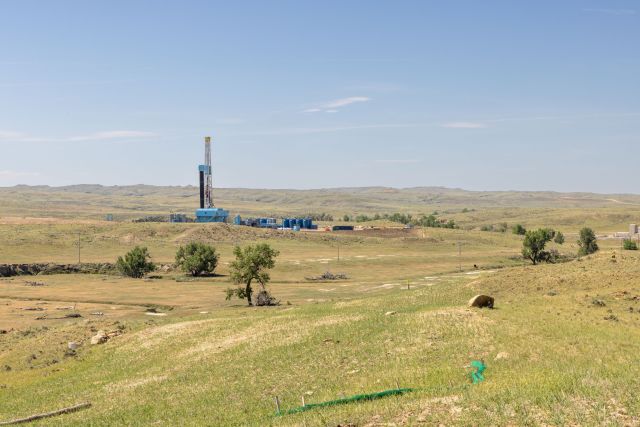Despite being the least populous state in the US, Wyoming is positioning itself as a major player in the nation’s evolving energy landscape.
In a wide-ranging interview with Hart Energy, Governor Mark Gordon emphasized the state’s commitment to developing a diverse portfolio of energy sources—from traditional fossil fuels like coal and natural gas to emerging sectors such as advanced nuclear power and wind.
Governor Gordon, a former oil and gas professional and lifelong Wyomingite, underscored the state’s unmatched resource base, including significant reserves of coal, natural gas, uranium, and rare earth minerals. “Wyoming is a land of opportunity,” Gordon said, citing the state’s role as the top coal producer in the country and its growing appeal to both domestic and international energy investors.
Coal continues to play a foundational role in Wyoming’s economy. The state is home to eight of the ten largest coal mines in the US and supplies coal to at least 23 states. While demand has declined in recent years, Gordon sees a future for coal as part of a balanced energy mix—especially given its low sulfur content and affordability. He believes technological innovation can make coal more viable in the long term, particularly if it can be burned more efficiently.
Wyoming’s oil and gas sector is recovering from the COVID-19 downturn, with activity picking up in the Powder River Basin. While competition from lower-cost basins like the Permian in Texas and New Mexico remains strong, Wyoming’s shale plays are attracting attention from companies such as EOG Resources, Continental Resources, and Occidental Petroleum.
Natural gas, especially in the Green River Basin and Pinedale Field, also holds promise. Gordon highlighted opportunities to expand into liquefied natural gas (LNG) exports, citing growing interest from trade partners in Asia. Wyoming’s ability to offer carbon-credit-eligible gas could give it a competitive edge in international markets seeking to meet net-zero targets.
Wyoming is also embracing nuclear energy. TerraPower, backed by Bill Gates, is constructing its first Natrium advanced nuclear reactor in Kemmerer, near a retiring coal plant. The state hopes to use the project as a model for training a local workforce in nuclear technologies and building related infrastructure. Wyoming also holds one of the largest domestic uranium reserves, further reinforcing its role in the nuclear supply chain.
Microreactors and small modular reactors (SMRs) are additional areas of focus. These technologies could power industrial operations such as oilfields, offering cleaner energy alternatives while fostering new high-tech job opportunities. Gordon noted growing international interest in Wyoming’s nuclear potential, including from Middle Eastern nations.
Gordon expressed cautious optimism about the current federal administration’s stance on energy, although he voiced concerns about delays in permitting and regulatory reviews—especially on federal lands, which cover nearly half the state. He referenced long-standing efforts like sage grouse habitat protection and migration corridor planning as evidence that Wyoming can balance development with environmental stewardship.
Gordon also acknowledged slow progress in confirming key federal agency leadership positions, which he sees as necessary for executing energy initiatives effectively. Still, he remains hopeful that Wyoming’s collaborative, adaptive approach will allow it to navigate changing federal priorities.
The governor also addressed the growing wildfire risk, citing 2023 as Wyoming’s most severe fire season to date, with over 800,000 acres burned—mostly on private and state lands. The fast-moving House Draw Fire, among others, demonstrated how extreme weather conditions can quickly overwhelm even well-prepared response teams. The state is now focused on pre-positioning firefighting assets and improving coordination for future fire seasons.
Governor Gordon envisions an energy future in which Wyoming’s traditional strengths—fossil fuels, mining, and ranching—coexist with new technologies and environmental responsibility. With ongoing efforts to train a versatile workforce and attract diverse energy investments, Wyoming aims to stay at the forefront of national energy development, regardless of political shifts in Washington.
As Gordon put it, “We can produce energy and take care of the environment. We’ve proven that, and we’re ready to lead.”










The latest news in your social feeds
Subscribe to our social media platforms to stay tuned